Porsche Taycan vs. Tesla Model S: The Test
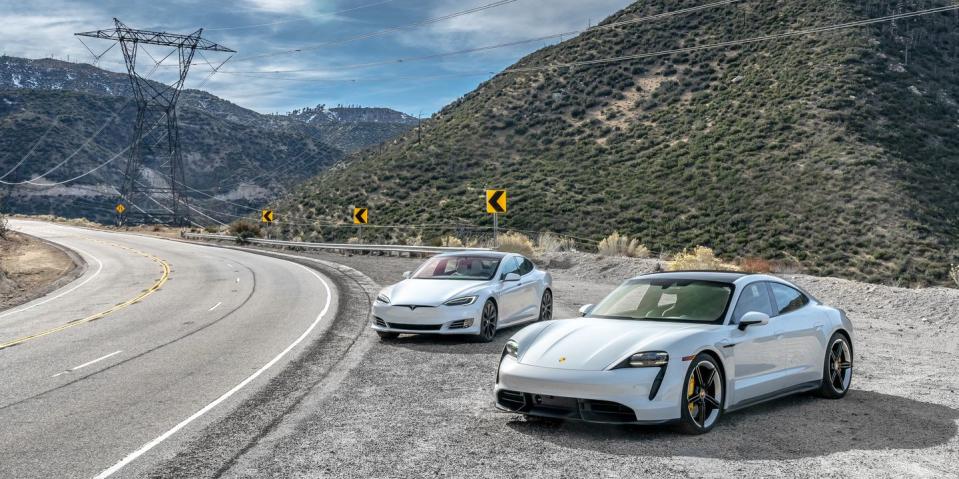
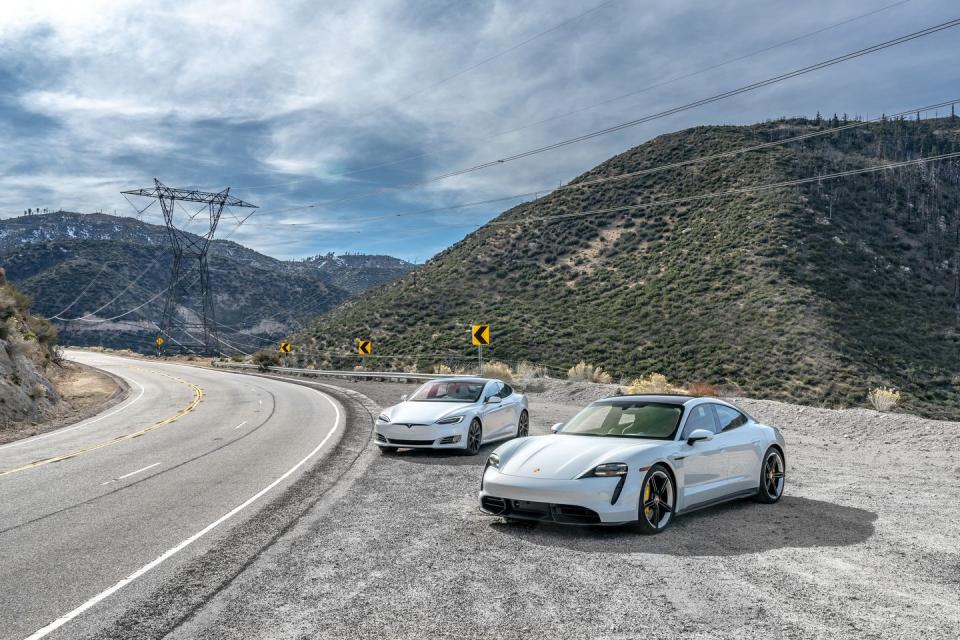
We didn't set out to dangle the competition under Tesla's nose. The plan was merely to line up a Tesla Model S against a Porsche Taycan—the Tesla's first true challenger—to see if there's a new EV front-runner. But if you want to experience the most powerful Supercharger in the greater Los Angeles area, you're going to find yourself at SpaceX's Hawthorne headquarters, which is also home to Tesla's design studio.
As we set up the Model S for a max-charging session, Tesla employees mobbed the Taycan. Sizing it up on a granular level, they were visibly impressed by the build quality on the preproduction Porsche and genuinely excited about a new EV contender. Their level of open-mindedness—far exceeding what we've come to expect from Tesla owners and fanatics—is no doubt one of Tesla's strengths.
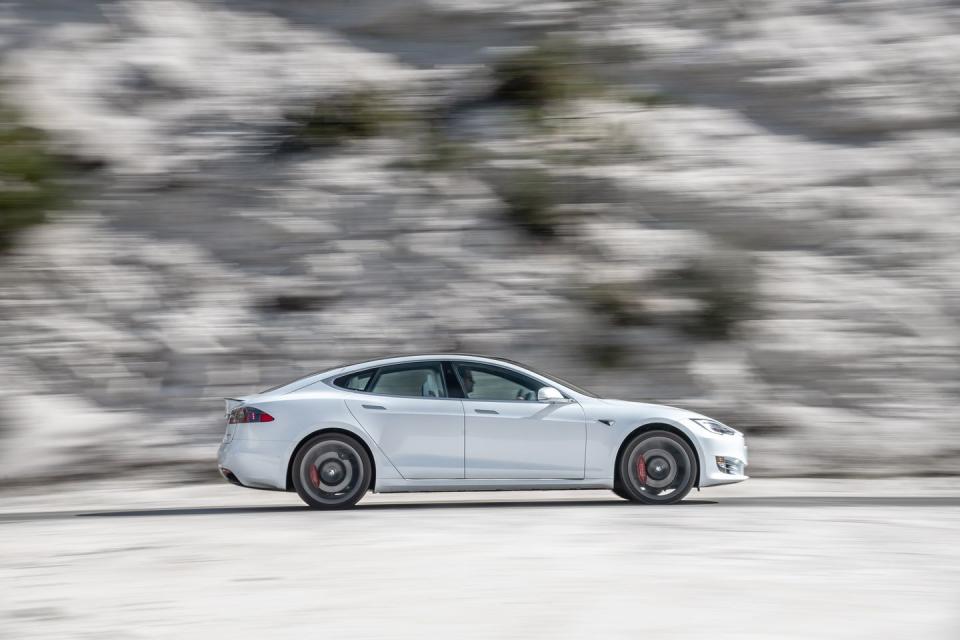
It's easy to forget just how open-minded they were when creating the Model S, which launched in 2012. At the time, the prevailing approach to electric vehicles involved automakers taking one of their smallest and cheapest cars and stuffing it with a battery good for maybe 100 miles of range. With rare exception, this bare-minimum effort to meet regulatory mandates for zero-emission vehicles resembled a toddler pouting when faced with new rules. Those obstinate automakers were right about one thing, though: The winning formula was definitely not an expensive economy car with pathetic range and a giant battery taking up much of the cargo space.
What the world really wanted was the approach Tesla took, exemplified by the Model S, its first car built completely in-house. A large, attractive, and expensive luxury car with a massive battery pack enabling a 265-mile EPA range. At the time, that alone was enough to be outrageous.
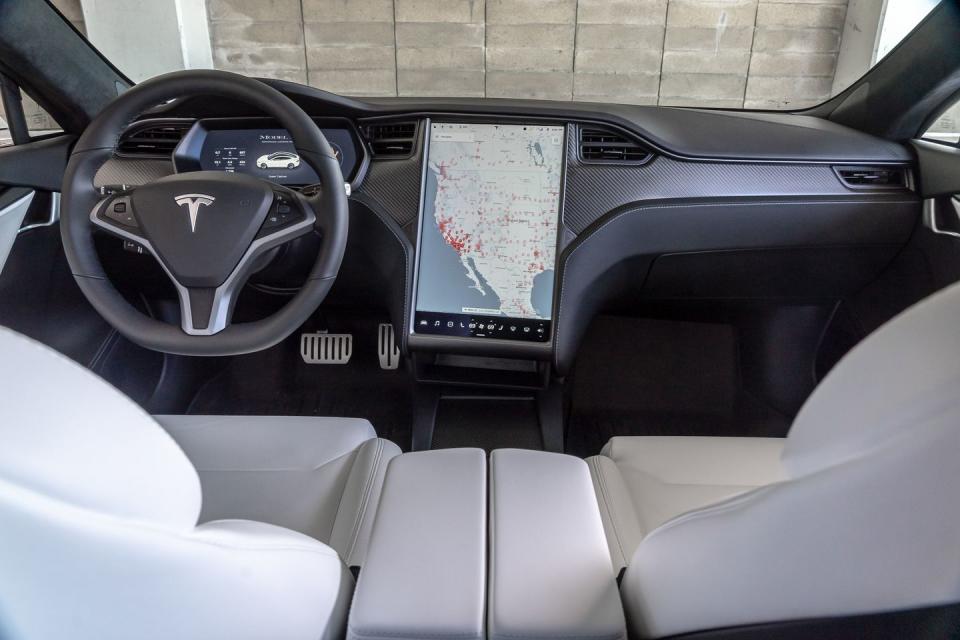
But Tesla went even further, rethinking details large and small. For example, the Model S has no ignition switch; employs an automatic secondary latch for the front trunk, eliminating the usual fumbling for the release; uses motorized door handles that extend to greet the driver; and features a giant 17.0-inch center touchscreen. Shortly after the Tesla's launch, General Motors reportedly compiled a lengthy dossier outlining the litany of its internal requirements that the Model S violated.
Tesla's ability to update the entirety of its software via wireless downloads is something other automakers are still enviously racing to match, as is its Autopilot suite of driver-assist features, which came out a few years later. Part of Tesla's mystique has become continual change, and the Model S has seen plenty. Its battery pack has grown by 15 percent, and its range even more, to an EPA-rated 373 miles on today's Long Range model. The sprint to 60 mph has been lopped nearly in half, and rear-facing third-row seats have come and gone, as have various models with smaller battery packs. Meanwhile, the price of the top-performing variant started at $105,400, rose to as high as $136,200, and is now back down to $101,190, which once again includes free use of Tesla's expansive Supercharger network.
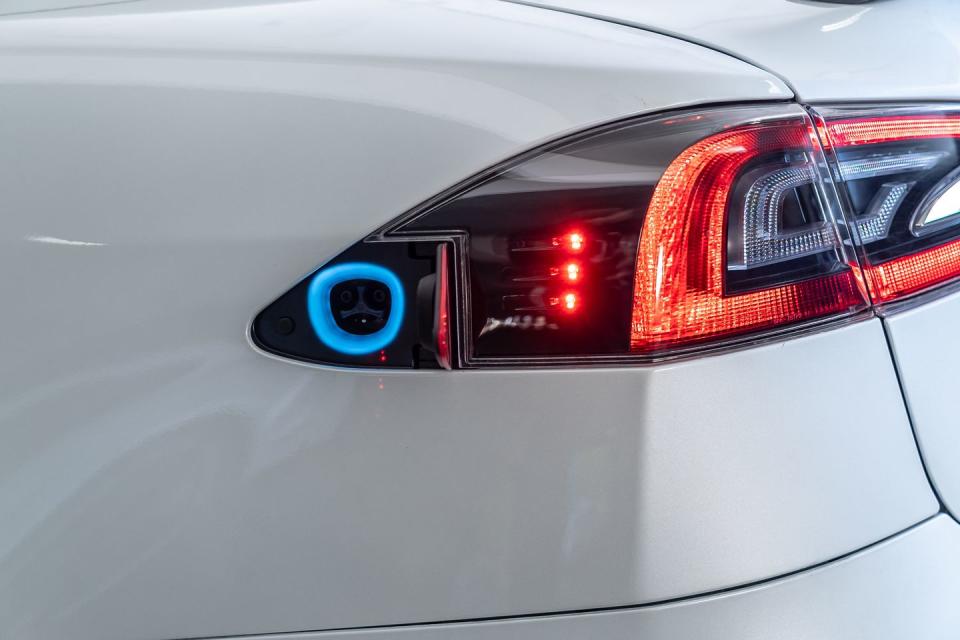
Thanks to the Model 3, which follows the Model S blueprint at a lower price point, Tesla is on the cusp of selling its millionth vehicle despite producing only four models thus far, none of which has yet to see a second generation. As much as Tesla has achieved, though, its most inconceivably difficult accomplishment is probably this: causing every other automaker to change course.
Which brings us to the Porsche Taycan, clearly a response to the Model S and that car's first real competitor. Molded into a swoopy and similarly sized four-door, packing a sufficiently large battery, and churning out 750 combined horsepower from its front and rear electric motors in the top model, the Taycan impressed us from the start. Then the bad news started trickling out: first, the absurdly high $186,350 starting price for the Turbo S, followed shortly by the absurdly low EPA range figure of 192 miles.
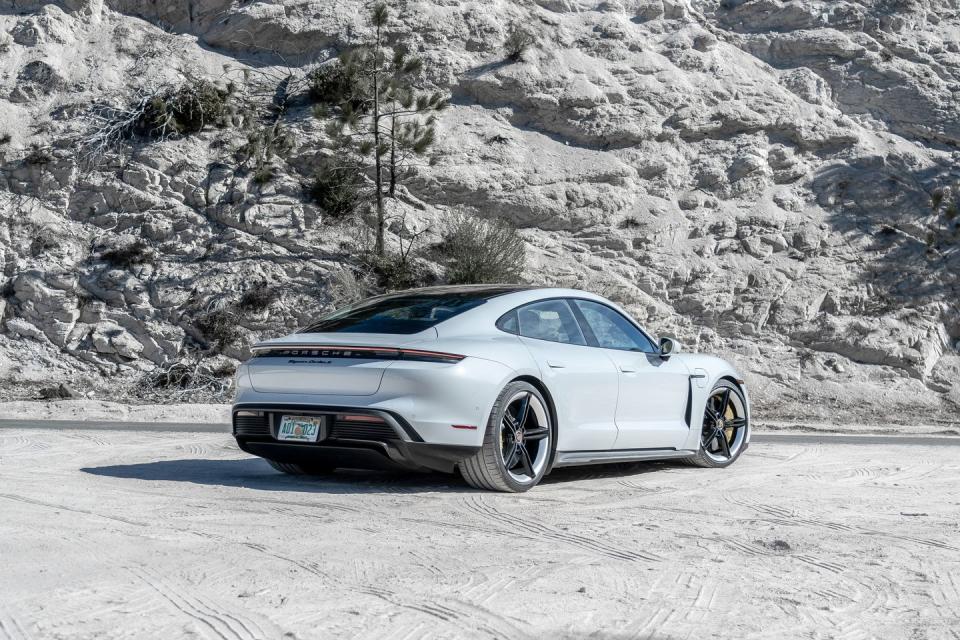
But an EV can't be judged on range alone. So, we took a Taycan Turbo S to meet its inspiration, the latest Model S Performance, complete with Tesla's Raven updates (i.e, new suspension hardware and an upgraded front motor) that rolled out in 2019. In this thorough work-up of the pointy end of the EV market, we pitted the two cars against each other in head-to-head tests of performance, real-world highway range, and fast-charging speed, then honed our impressions in California's Angeles National Forest.
2nd Place:
Porsche Taycan Turbo S
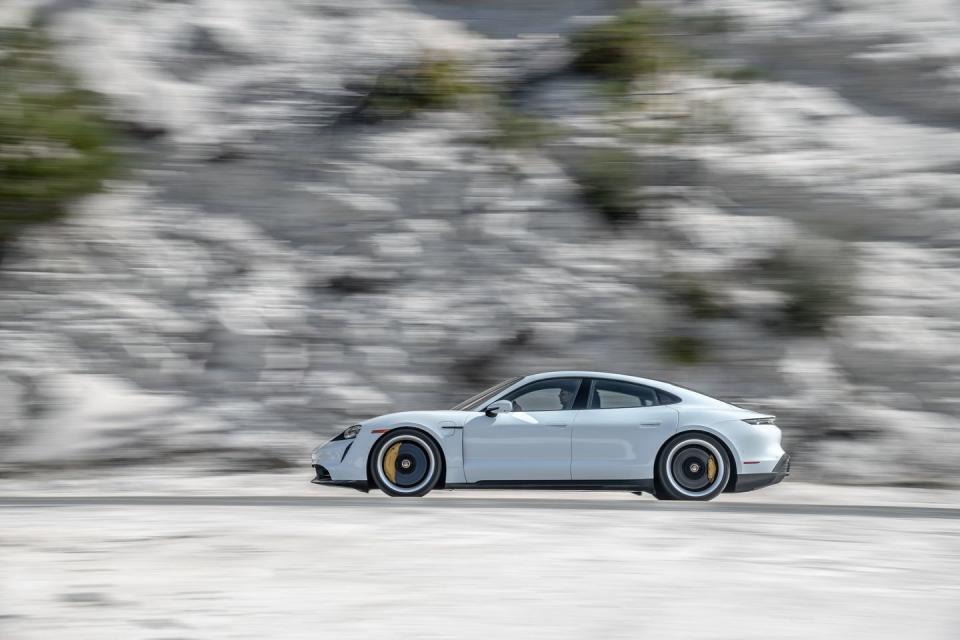
Highs: Arresting looks, time-warping acceleration, range is a nonissue.
Lows: Lacking in storage and rear-seat space, all-the-money price.
Verdict: Porsche creates the Porsche of EVs, applies Porsche pricing.
Getting in and out of the Taycan's low-mounted front seats and around the intrusively thick base of the B-pillars is moderately bothersome. But once you're in there, the view forward is the perfect blend of retreating hood and bulging fenders. Thanks to the aggressive roofline, the rearward view is, well, slitty, but the exterior presence it enables is totally worth it.
Driving it only furthers the sports-car sensation. It feels impossibly solid, so approachable and trusty that you find yourself comfortably flirting with its extremely high limits on the first on-ramp. Which is very Porsche, and very high praise for a car that weighs 5246 pounds. Part of the magic is in its great steering, with a tight on-center valley followed by linear effort buildup. And despite our car's 21-inch wheels, Porsche continues to impress in its unwavering commitment to ride quality.
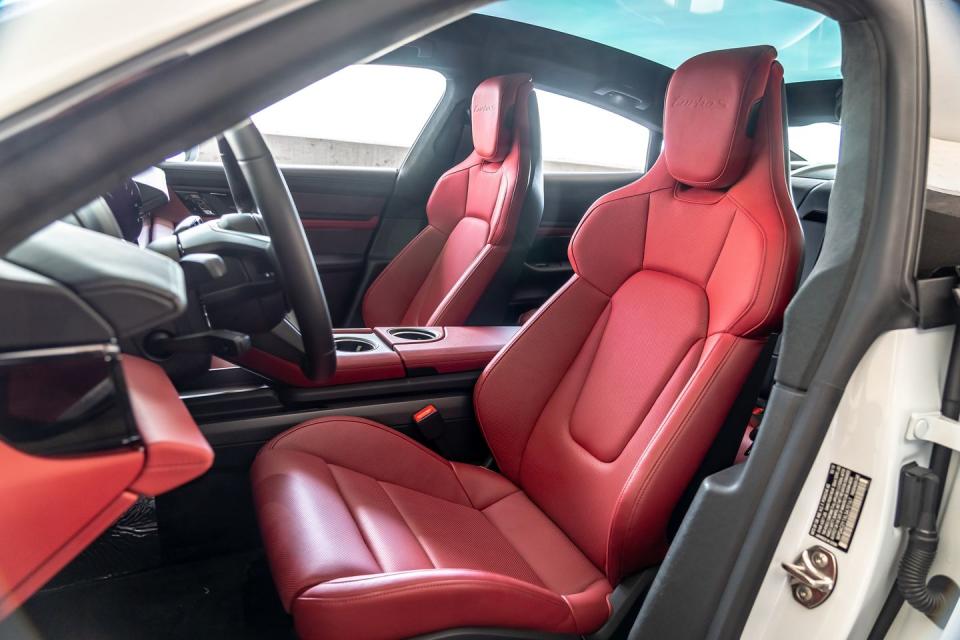
But these are all typical Porsche characteristics, and let's be honest, we fully expected the company to nail them. But does it move forward the EV state of the art?
Both cars are spectacular allies in a world of merging lanes and general traffic congestion. They can effortlessly vacate the space they occupied only an instant before, pouncing on the smallest of gaps. Enabling—no, encouraging—this megalomania are identical 1.1-second 30-to-50-mph and 1.6-second 50-to-70-mph acceleration times, the quickest we've ever measured.

 Yahoo Autos
Yahoo Autos 